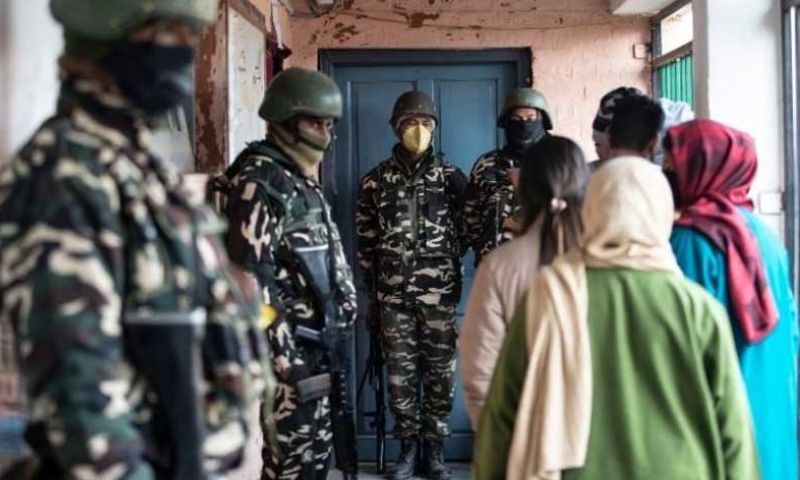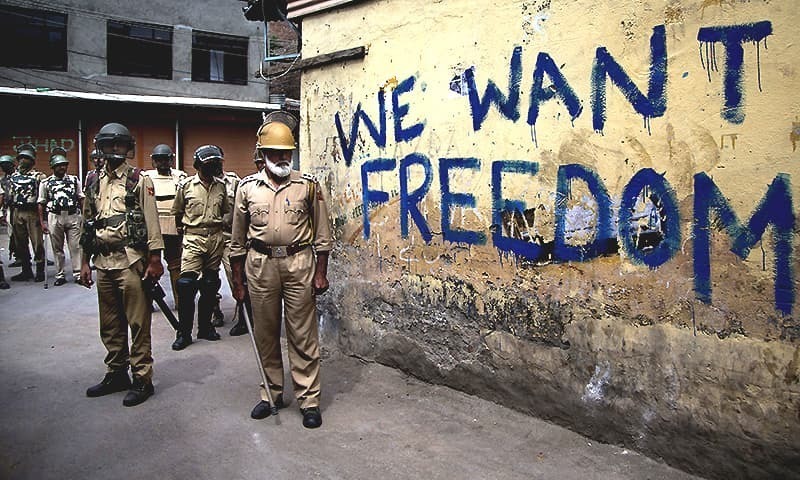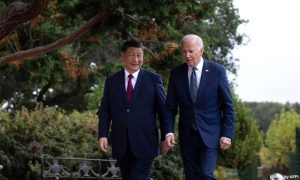The political landscape in Illegally Occupied Jammu and Kashmir (IIOJ&K) is undergoing a significant transmogrification as the election schedule is announced, marking the first elections since the Indian government’s sweeping changes to the region’s status in 2019. The polling, set to occur in three phases on September 18, September 25, and October 1, with results on October 4 as announced by the Election Commission of India, holds immense significance. It will not only test the strength of the Bharatiya Janata Party (BJP) in the region but also gauge the sentiment of the people towards the changes imposed by the Jammu and Kashmir Reorganization Act of 2019, the Delimitation Report of 2022, and the Reorganization Act of 2023.
This is a moment of reckoning for the BJP, which has seen its standing in the valley dwindle over recent years, largely due to its controversial policies and perceived manipulation of the electoral system to favor its political strategy. One must remember the political history of the region, even if the Indian media portrays it as a victory of democracy, the return of normalcy to the area, and the growth of locals’ confidence in the central government. For example, the latest elections were held in 2014, the year when the People’s Democratic Party of Mehbooba Mufti and Modi’s BJP formed a coalition government. However, the BJP withdrew its support in 2018 when the alliance didn’t endure long. The assemblies were dissolved by the territory’s governor, Satya Pal Malik, in the same year. Under Article 356 of the Constitution, the President’s rule was enforced in 2019. Subsequently, the revocation of Articles 370 and 35A occurred, so depriving the state of its territory. Until now, the Modi administration has used regional security concerns as an excuse to postpone the polls.
The BJP’s maneuvering in IIOJ&K is evident in the changes to the number of seats allocated to the different regions. Under the newly implemented delimitation plan, the number of seats in the Jammu region, which has a 43.6% share of the population, was increased from 37 to 43. In contrast, the Kashmir Valley, which constitutes 56.3% of the population, saw its seats increased by just one, from 46 to 47. In order to form a majority government, 46 seats are required, so the assembly’s total number of seats has been increased to 90 due to the shift in seat allocation. This strategic redrawing of electoral boundaries is seen as a direct attempt by the BJP to capitalize on its Hindu vote bank in the Jammu region, where it believes it has a stronger foothold, thus sidelining the larger Muslim-majority Kashmir Valley. The absence of representation from Ladakh, following its separation from the state and its new status as a union territory, further complicates the electoral dynamics.
People of Occupied Kashmir Reject Decisions Made on August 5
The Modi government’s approach to reservation policies in the region has sparked further controversy. Changes to the Jammu and Kashmir Reservation Act, 2005, this year increased the quota for certain communities, including Paharis, Gujjars, Scheduled Castes, Scheduled Tribes, and Other Backward Castes, to 70%, leaving only 30% for open merit. Typically, open merit categories command a higher share, ensuring that opportunities are broadly accessible. The reversal of this convention has caused unrest among the upper caste Hindus and general populace, who see this as a direct affront to their prospects, leading to the perception that the BJP is willing to compromise meritocracy for electoral gains. This discontent has led to chaos within the ranks of the BJP, as evidenced by the turmoil over candidate selections. In a dramatic display of dissent, candidate lists were revised multiple times within hours, indicating the internal strife and opposition faced by the party from its own cadres. Former high-profile leaders, including ex-deputy chief minister Nirmal Singh and other senior ministers, found themselves excluded from the final list, prompting protests and vandalism at the BJP office. The BJP’s move to favour new entrants over seasoned politicians has only exacerbated the anger and sense of betrayal among long-time BJP supporters.
Furthermore, in terms of the goals of the local populace in the region, these elections appear to be a “double-edged sword.” For example, a lot of people in Kashmir believe they must fight India to get their sovereignty back. According to Omer Abdullah, the incarcerated former chief minister, “the newly elected assembly’s primary task should be to demonstrate to India and the world that the people of IIOJ&K reject the decisions made on August 5.” As a result of India’s protracted and violent occupation, which has repressed opposition and calls for self-determination, many Indian troops have suffered fatal casualties. By using Pakistan as a scapegoat, the real problem is overlooked. It seems improbable that elections in an area where people have been denied rights for decades can close the gap. Along with a strong military presence, oppressive legislation like the Sedition Law, AFSPA, and PSA continue to enslave the populace and breed hopelessness. Only until the people are given the democratic freedom to choose their own destiny—including the restoration of the territory’s unique pre- 2019 status will facilitate bringing true peace and security.
As the elections approach, the BJP faces the dual challenge of managing internal dissent and convincing the people of IIOJ&K of its support. This Democratic Facade: Kashmir’s Vote Under Siege will test whether the party can overcome allegations of favoritism or if the people will push for a return to autonomy and self-determination. The outcome will have a significant impact on both the region and India’s wider political landscape.

























